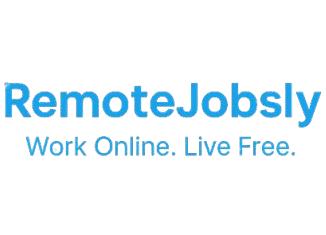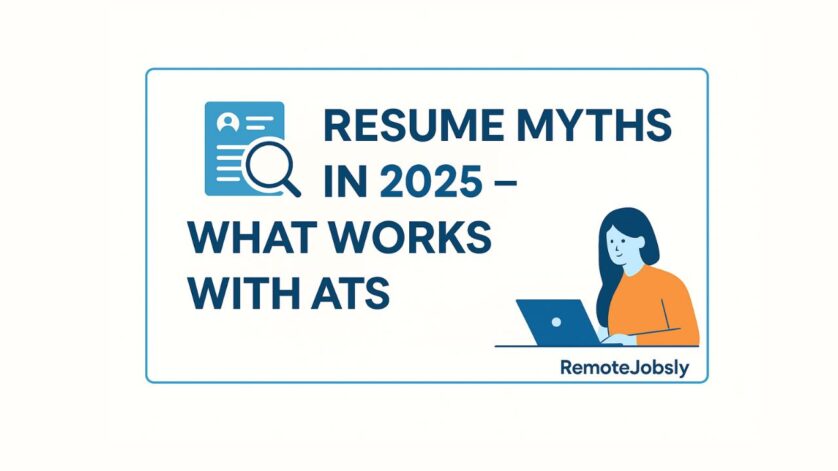✅ Introduction
Job hunting in 2025 is more competitive than ever, and the role of technology in recruitment continues to grow. One of the most critical factors job seekers need to understand is how the ATS (Applicant Tracking System) works. If your resume isn’t optimized for ATS, it might never even reach a human recruiter.
Despite this, many job seekers are still using outdated strategies based on common resume myths. These myths can drastically reduce your chances of getting shortlisted. If you’ve been applying for jobs without getting responses, it may not be your skills that are the problem — it could be your resume format, design, or keywords.
In this blog, we will debunk 5 popular resume myths in 2025 and share what actually works when applying for jobs in today’s digital hiring landscape.
🔍 What is an ATS (Applicant Tracking System)?
An Applicant Tracking System (ATS) is a recruitment software used by companies to streamline the hiring process. It helps employers sort, scan, and rank resumes based on relevance to the job description.
If your resume is not ATS-friendly, it could be automatically rejected before it even reaches a recruiter. Around 95% of Fortune 500 companies use ATS, and even small businesses are adopting it in 2025.
That’s why understanding ATS optimization is no longer optional — it’s essential.
❌ Myth 1: Fancy Designs and Graphics Make Your Resume Stand Out
✅ Reality: Simple is Powerful.
Many job seekers believe that colorful templates, graphics, icons, and columns make a resume look more impressive. While this might catch a human eye, ATS software cannot read images, graphics, icons, or multiple columns correctly.
✔️ What Works in 2025:
- Stick to simple, clean, and professional designs.
- Use standard fonts like Arial, Calibri, or Times New Roman.
- Avoid tables, graphics, icons, or text boxes.
- Use a traditional single-column format to ensure the ATS parses information correctly.
❌ Myth 2: One Resume Fits All Jobs
✅ Reality: Generic resumes won’t get you shortlisted.
Each job has different keywords and responsibilities. ATS software compares the content in your resume to the job description. If your resume lacks the relevant keywords, it will be rejected.
✔️ What Works:
- Customize your resume for each job.
- Use keywords directly from the job posting — tools, skills, job titles, and responsibilities.
- Example: If the job description mentions “Data Visualization” and “Tableau,” your resume should include these terms in your skills or work experience.
❌ Myth 3: Keyword Stuffing Improves Your Chances
✅ Reality: ATS systems in 2025 are smarter.
Gone are the days when stuffing keywords randomly would pass ATS. Today’s systems check for keyword placement, context, and relevance. Overloading your resume with keywords can not only get flagged by ATS but also looks suspicious to hiring managers.
✔️ What Works:
- Use keywords naturally in job responsibilities, summaries, and achievements.
- Turn tasks into achievement-based bullet points.
Example:
❌ “Managed data.”
✅ “Managed and analyzed customer data using Excel and Tableau, improving operational efficiency by 15%.”
❌ Myth 4: Listing All Jobs Shows More Experience
✅ Reality: Less is More — if it’s relevant.
Many candidates believe that listing every job, including internships from 10 years ago, strengthens their profile. In reality, it can dilute your resume’s impact and confuse the ATS.
✔️ What Works:
- Focus on the last 10–15 years of relevant experience.
- Remove unrelated jobs unless the skills directly transfer to the new job.
- Structure:
- Job Title
- Company Name
- Location
- Start – End Dates
- 3–5 Bullet Points Highlighting Achievements
❌ Myth 5: Creative Job Titles Help You Stand Out
✅ Reality: ATS Looks for Industry-Standard Job Titles.
If you write “Growth Hacker” instead of “Digital Marketing Specialist” or “Tech Ninja” instead of “Software Engineer,” the ATS may not recognize it.
✔️ What Works:
- Use job titles that align with industry standards.
Examples: - ✔️ Business Analyst
- ✔️ Front-End Developer
- ✔️ Customer Success Manager
Avoid playful, overly creative titles when applying.
🎯 Bonus Tips for an ATS-Friendly Resume in 2025:
- Save your resume in .docx format or PDF (if accepted by the job portal).
- Avoid placing important information in headers, footers, or graphics.
- Use clear, keyword-rich section titles like “Work Experience,” “Education,” “Skills,” and “Certifications.”
- Check for spelling mistakes — ATS systems do not correct them.
- Keep your resume between 1-2 pages — clear, concise, and relevant.
📌 Conclusion
In 2025, understanding how ATS works is key to landing more interviews. Avoid falling for outdated myths. Focus on clear formatting, relevant keywords, and achievement-driven bullet points.
A well-optimized resume won’t just pass the ATS — it’ll impress the recruiter on the other side.
✅ Need help? Check out our free resume tips, guides, and templates here at RemoteJobsly.in.
🔒 Note:
- This blog is purely informational.
- We do not guarantee job placements.
- Users are advised to verify job opportunities from official company websites.
💼 Follow RemoteJobsly for More:
👉 Daily Job Updates
👉 Resume Tips
👉 Remote Work Opportunities

